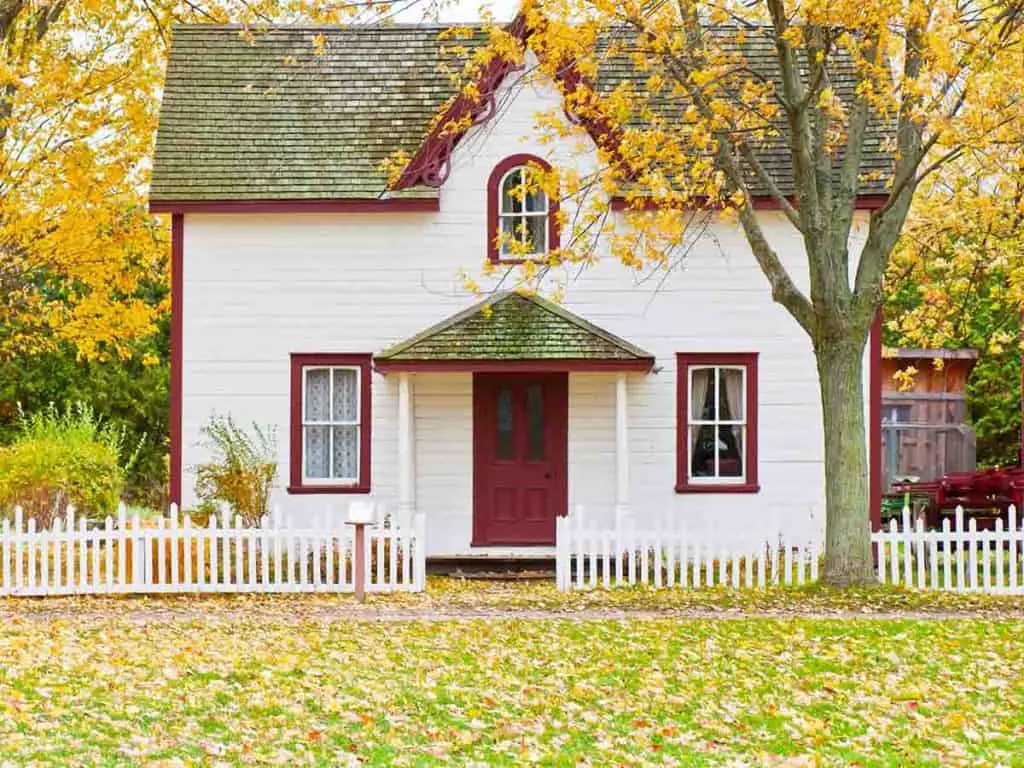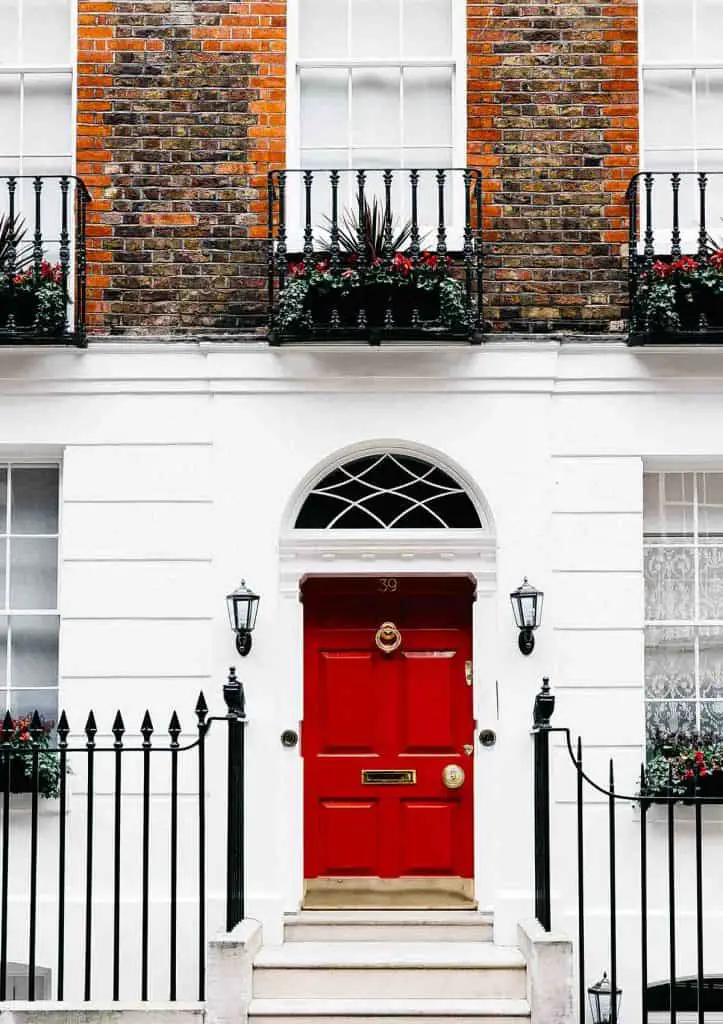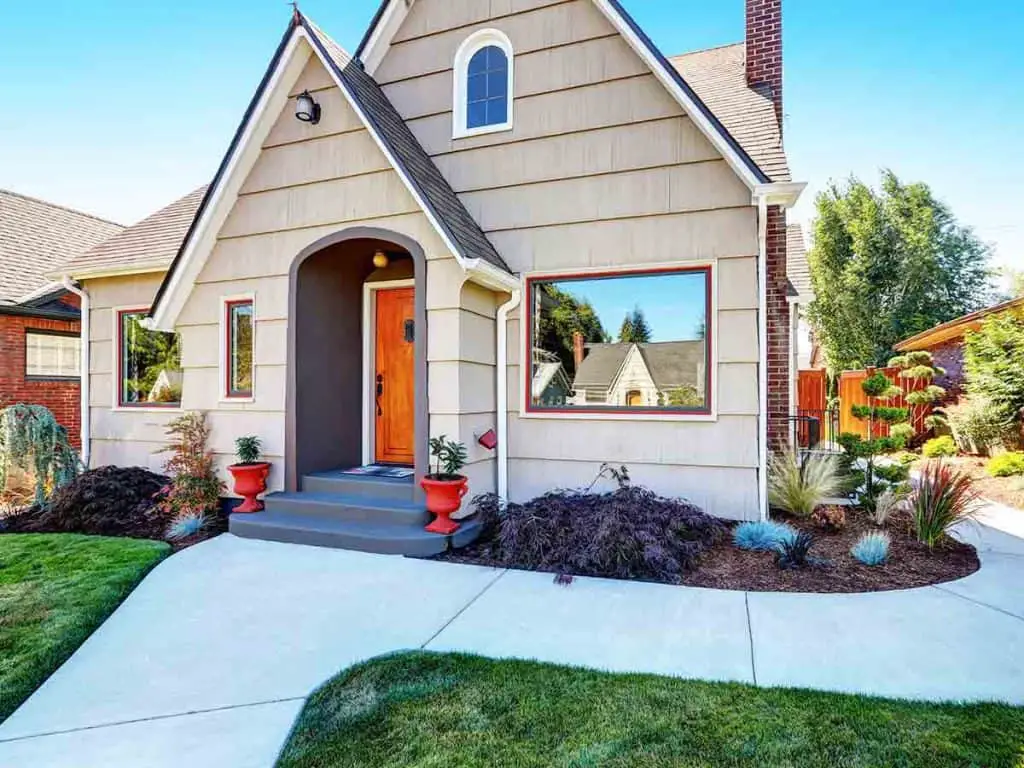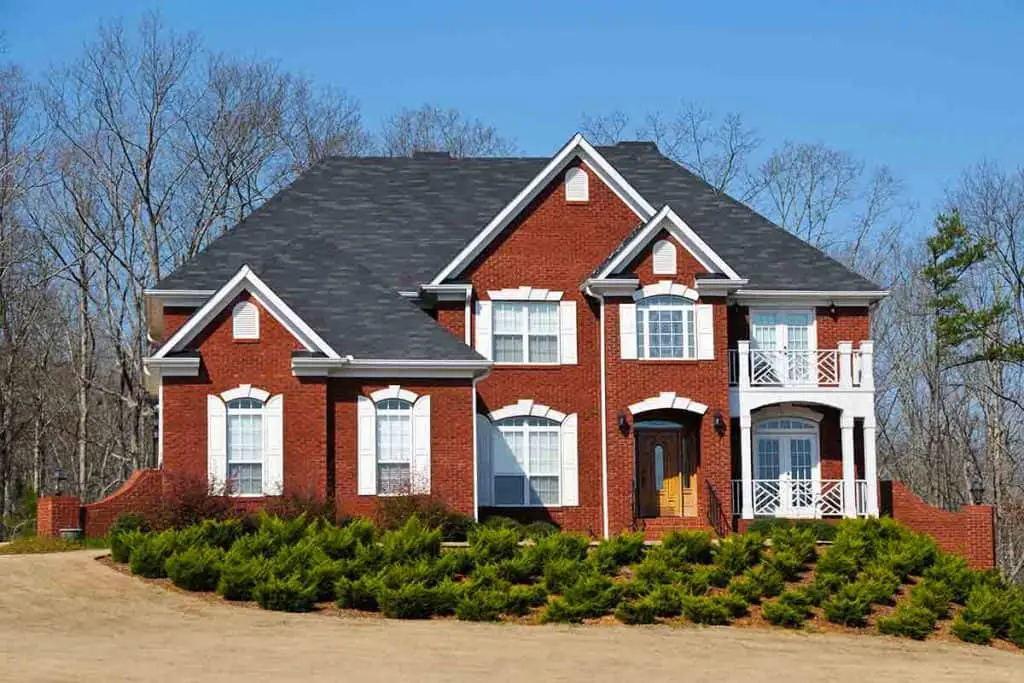House Exterior Colors: 10 Complete Tips (+5 FAQs Answered)
Painting your home’s exterior enhances its attractiveness and improves weatherproofing.
Regardless of your situation – painting a new house, refreshing an existing scheme, or painting to sell – these are interesting but essential tips to note before deciding the paint colors to apply.

Quick Notes on Exterior Paints
A premium exterior paint lasts between five and ten years, depending on the prevailing conditions.
The underlying surface influences the type (and expense) of the paint finish necessary.
Wood expands with temperature changes and needs a flexible coating that moves with it; stone is less of an issue but needs a thorough clean to remove any small plants lodged in crevices.
But what about the color?
How to choose colors for your home exterior that showcases your style to the world?
The 10 Tips on Choosing Colors for House Exterior

Painting the exterior of your house is a significant investment of time and money, so choosing the right colors for your house exterior the first time avoids expensive repainting.
Top tips for choosing colors for your home exterior include:
#1 Check Your Permissions
Depending on your area and property type, you may have a restricted color selection for the house exterior.
Historic properties and conservation areas may have legal requirements to stick to a specific color palette for exterior paint.
Before investing in paint colors, check the rules on home facade colors, rather than assuming you are free to choose any color available.
Renters may also need the landlord’s permission before painting as part of their rental checklists.
#2 Check Out the Neighborhood
You may like to stand out from the crowd, but look at neighboring properties before you opt for any rash house exterior paint ideas.
Most places have a color mood, and there are often underlying practical decisions for those color choices.
Bright white reflects summer heat and easy to wash down – a practical choice for hot climates and places where you get plenty of green growth on the walls.
Coastal areas often use different colors for adjoining properties – the story is that it makes it easy for returning fishermen to spot their home from the boat.
You can still opt for a radically different color from your neighbors.
Still, it makes sense to understand the prevailing color choices and the local wisdom behind them before choosing paint colors for your house exterior.
#3 Match Your Dirt
Unless you enjoy washing your exterior walls, it makes sense to choose exterior colors that hide the dust.
For example, if you live in an area with red dust, you may find color matching your dust reduces the number of times you feel compelled to wash your walls.
Alternatively, a yellow shade matches sandy deposits.
Grey is currently a popular house exterior paint color because of its ability to look fresh even with a coating of dust, but not if your prevailing dirt is red.
#4 Sun Bleaches Paint
House facade colors suffer from sun bleaching, and when you choose an exterior paint color, consider the final result.
You may want to pick a brighter shade, knowing that the brightness will fade in a year to a more neutral tone.
It is worth asking local exterior decorators how fast the paint color fades in your area and get some perspective on how to pick paint colors for your home exterior.
#5 Consider the Landscape
Your home does not exist in isolation – it is part of a broader landscape.
If an artist were to paint your home as part of the landscape, would it look good?
One way of selecting between house exterior paint ideas is to take a picture of your house and then use a photo-editing tool to edit the color of your home until you find one that makes a pleasing picture.
#6 Does Cost Matter?
The exterior of your house is a vast surface and will take a lot of paint to cover.
White paint tends to be cheaper than colored paint, plus your paint store may have last season’s colors at bargain prices.
Even a small reduction per gallon of paint adds up when you have an entire house to paint.
If your budget is tight, choose your paint colors from the best price options.
Remember, a fancy name adds dollars to the price; look for exterior paints with less romantic descriptions like beige instead of salted caramel.
#7 Pick Out the Details
Should you paint your house all one color?
Depending on your house style, you may want more than one color for your house exterior with window frames and other details using a contrasting color to the walls.
Typically, you paint the details in a darker or contrast color to the walls. If you love vibrant colors, using them in small detail areas is effective and not overwhelming.
#8 Matching Interior and Exterior Theme
The interior and exterior colors can be different, but choose exterior shades and tones from the same color group to your living room color scheme.
It helps improve consistency and color harmony as you transition from the outside to the inside.
#9 Consider the Market
If you are sprucing up your house exterior because you want to sell and move on, then your best colors are those with curb appeal – neutral, paler colors are fresh and inviting.
Surprisingly, you can add several thousand to your selling price by ensuring your home exterior colors are not outrageous but blend into the neighborhood.
#10 Identify Your Business
Suppose you are choosing exterior paint for a business property or a home office that clients visit occasionally.
In that case, there is much merit in choosing a vibrant color – potential customers can’t miss you if you are the only orange building in the area.
The exterior paint color becomes part of your business identity because it helps people know who and where you are.
If your business name is the Pink Café, your exterior paint color choice is obvious, and it only remains to choose which shade.
FAQ: House Exterior Paint Colors

What Type of Paint is Best for House Exterior?
How is exterior paint different from interior paint?
Exterior paint differs from interior paint because exterior paint needs:
- Water and UV resistance.
- Mold and Mildew resistance.
- Stronger resins bind the pigments and resist cracking and chipping.
- Stronger color chemicals.
- Durability.
- Strong adhesion to multiple surfaces.
- Capable of adapting to wide temperature variations without damage.
Exterior paint has a different formulation to interior paint and other requirements. Interior paint today uses chemicals that don’t impact human health but is not as durable as exterior paint.
The nature of exterior paint is that you always have plenty of ventilation, and off-gassing is not an issue.
When choosing colors for the house exterior, ensure you use a paint formulated for exterior use because leftover interior paint is not up to the job of protecting your house.
What Exterior Paint Lasts the Longest?
You get the longest life from acrylic paints, but the most significant impact on the life of your exterior paint finish is the number of coats applied and surface preparation.
How many coats of exterior paint do you need for longer protection?
Two or more thin coats will last between eight and twelve years with appropriate surface preparation.
One coat with minimal surface preparation will need renewal every one or two years.
Does Exterior Paint Need Primer?
Most modern exterior paints are self-priming and don’t require a separate primer.
But there are excellent reasons for using a primer as a base coat:
- A neutral primer in white or grey is often considerably cheaper than an expensive colored paint – and it makes sense to build up your paint layers with more inexpensive paint as a base.
- Using a different colored primary ensures you get even coverage of all paint layers and don’t end up with thin spots that wear quickly.
- You get better color depth by applying a colored topcoat to a base coat rather than directly to the exterior surface – especially if covering a dark wood or stone.
How Long Does House Exterior Paint Take to Dry?
Drying time is dependent on weather.
Ideally, you paint a house on a dry day without the risk of rain washing your paint off the walls and into the drain.
Latex paint will survive light rain after two hours of drying time, but it is not ideal. Six hours is better, but ideally, five dry days cure your exterior paint to a durable finish.
Acrylic paints let you paint in less-than-ideal conditions, but oil paints must have a full twenty-four hours of dry weather.
How Often Should You Paint Your House Exterior?
The frequency of exterior painting depends on how long your exterior paint finish lasts.
Your exterior paint finish lasts longer if you:
- Prepare the surface properly.
- Apply the paint in dry weather.
- Use multiple thin coats.
- Use premium paint with appropriate properties.
If the underlying surface is flaking, crumbling, or has mold growth and you fail to clear this away, the paint will flake off as the under-surface deteriorates.
Cleaning and brushing the surface to give a firm painting surface means the paint adheres and remains in place for longer.
Premium paint with excellent surface preparation, applied in two thin coats, will give you a minimum of five years before you next need to repaint.
Poor surface preparation combined with one coat of paint, and you may find yourself painting your house annually.
Timeless Colors with New Names
Every year you can find a list of trending exterior house colors with lovely, evocative names, but the underlying tones remain the same.
Regardless of the name label, these are some of the top house exterior colors:
- White and shades of cream – it is clean, bright, and reflects the light.
- Beige – call it taupe or linen, but beige is soothing.
- Grey – battleship, pigeon, warm or cool grey is contemporary.
- Yellow – the palest shades with a hint of gold. If you want a trendy name, try caramelized pears.
- Red – bold and confident with white to pick out the details.
- Blue – from powder blue to a cloudless sky.
- Green – think earth tones rather than fluorescent.
- Brown – dark or light.
- Pastels – delightful in hot sunny climates.
Should you paint the exterior in dark colors?
Conventional wisdom is to avoid dark house exterior colors in sunny areas because:
- Sun damage is more apparent with darker colors.
- They absorb more heat, and you pay more to cool the house.
If you have to have black on your home’s exterior, have a black front door. Apparently, houses with black doors sell for higher prices.

Choosing Colors for House Exterior
You will not paint your house exterior as often as you redecorate inside, so it is worth spending some time looking at house exterior paint colors.
If you intend to employ a professional to carry out the work, take advantage of their expertise in knowing what house exterior colors work in your area.
Plus, if there is a possibility of moving home in the next few years, adopt a conservative approach and opt for colors that sell houses for more money and in less time.
